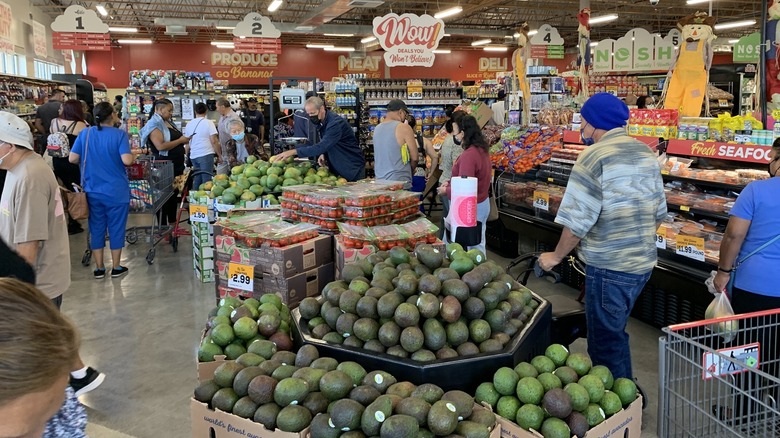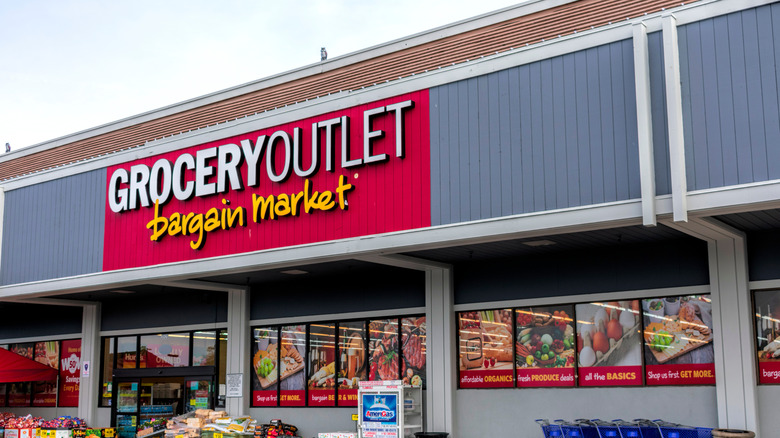Grocery Outlet Bargain Market: The All-Clearance Grocery Chain Perfect For Fighting Inflation
Inflation may be going down on the whole, but USDA findings show that food prices in December 2022 were over 10% higher than they were during the same month in 2021. The food-at-home index, which pertains specifically to grocery-store prices, jumped 13.5% per CNBC, which is the highest year-on-year increase in over 40 years. Eggs, milk, cereal, bread, and butter are in the direct line of fire — the weapon being that little label-making device that shoots out price-tag stickers. It's no wonder shoppers were pleasantly aghast when a Walmart in Lexington, Kentucky sold cartons of eggs for $2 a pop in February 2023.
The past couple of inflation-rife years has given way to all sorts of tips on how to save at the supermarket, most of which are pretty obvious. Shoppers on a budget might be advised to stick to sale items, join a wholesale club, or price-hop between stores for the best deals.
The Grocery Outlet Bargain Market, known as affectionately to some as "Gross-Out," may be the most straightforward solution for shoppers looking to save. The chain is like the Nordstrom Rack of supermarkets, but instead of designer denim, it offers steep discounts on overstocked and closeout foodstuffs.
Inflation? Never heard of her
Unfortunately for those in certain parts of the country, Grocery Outlet Bargain Market only graces seven states with its affordable offerings. Still, with 400 locations spread among those states, the chain (which was originally founded by San Franciscan Jim Read in 1946 under the name Cannery Sales) lauds itself as "the nation's largest extreme value retailer."
An Instacart search for a Seattle-area Grocery Outlet does not disappoint the frugal shopper within. As of this writing, a full gallon of Horizon Organic 2% milk goes for $5.69, which is only a few cents more than a half-gallon of the same product at Walmart. Likewise, a 10.8-ounce box of Honey Nut Cheerios will set you back $2.89 at Grocery Outlet, while Walmart sells the same size for $10.
So, how do these perfectly good products end up on Grocery Outlet shelves in the first place, and why are they so cheap?
Grocery Outlet: a place for second chances
According to recent data from New York City anti-waste company Recycle Track Systems, Inc. (RTS), nearly 30% of food in American grocery stores is destined for the trash. To put that in even more horrifying terms, U.S. retailers produce 16 billion pounds of food waste each year. Supermarkets need to replenish their shelves with fresh and/or more popular items, so when products have been sitting too long on the shelves, they're often delegated to the landfill.
That's where Grocery Outlet comes in. The discount chain is built to accept items that don't make it to shoppers' carts at traditional grocery stores. "You can tell [these items are] things that brands were trying out," former Saveur editor Andrew Richdale tells Bon Appétit. "Like this morning they had tzatziki Triscuits. I thought about buying them, but then decided, 'That's not my journey today.'" In other words, Grocery Outlet is not only a great choice for shoppers pinching pennies, it's also a haven of unusual options you might have missed in other stores.


